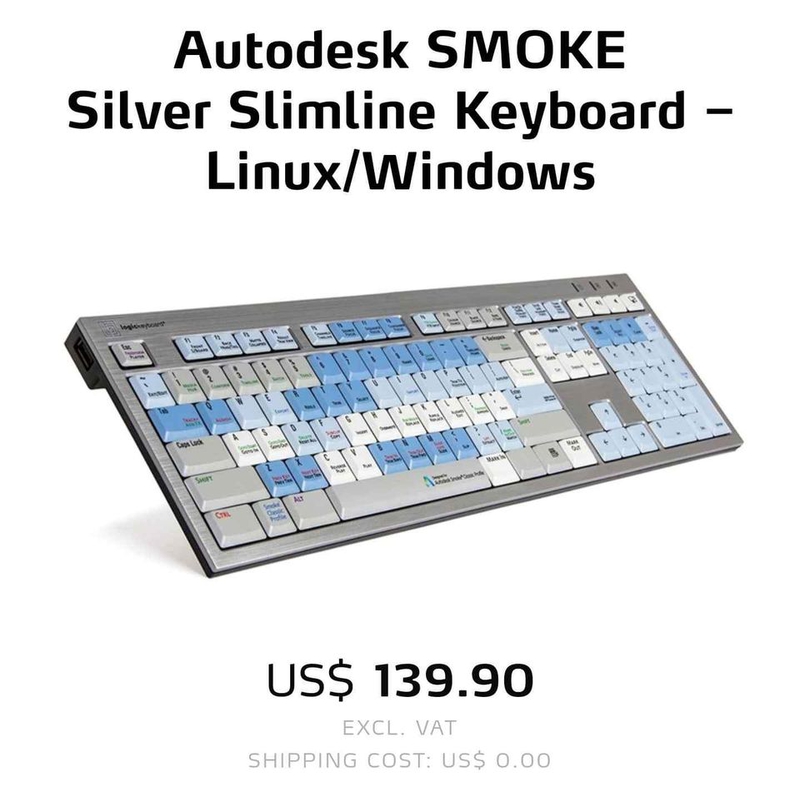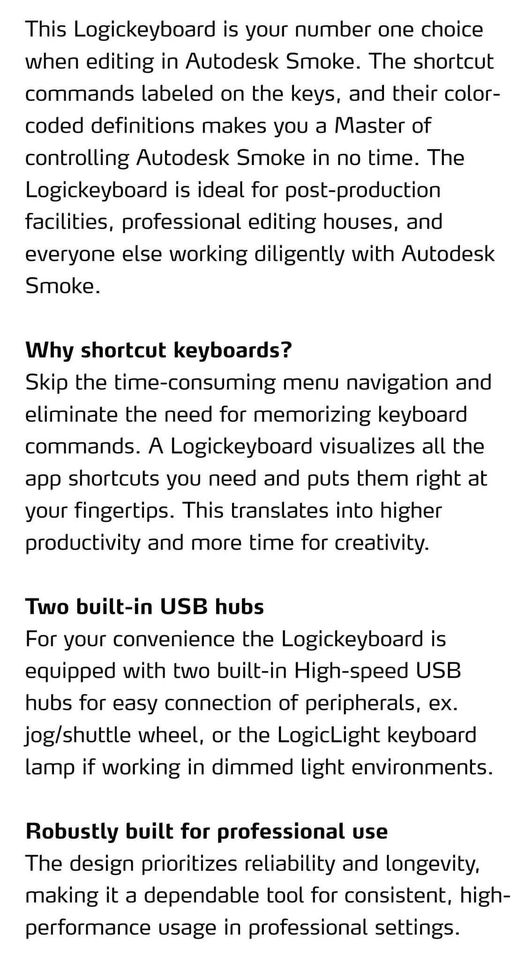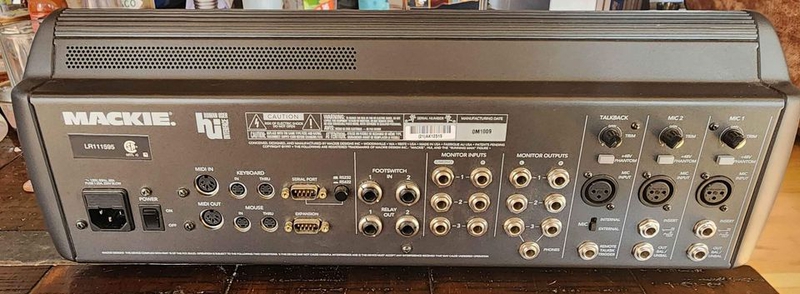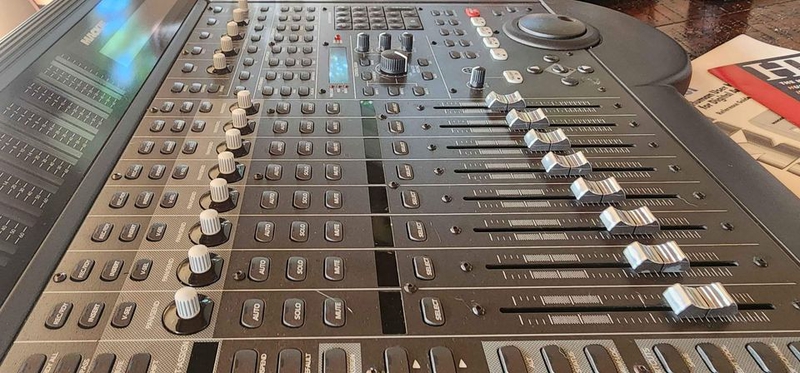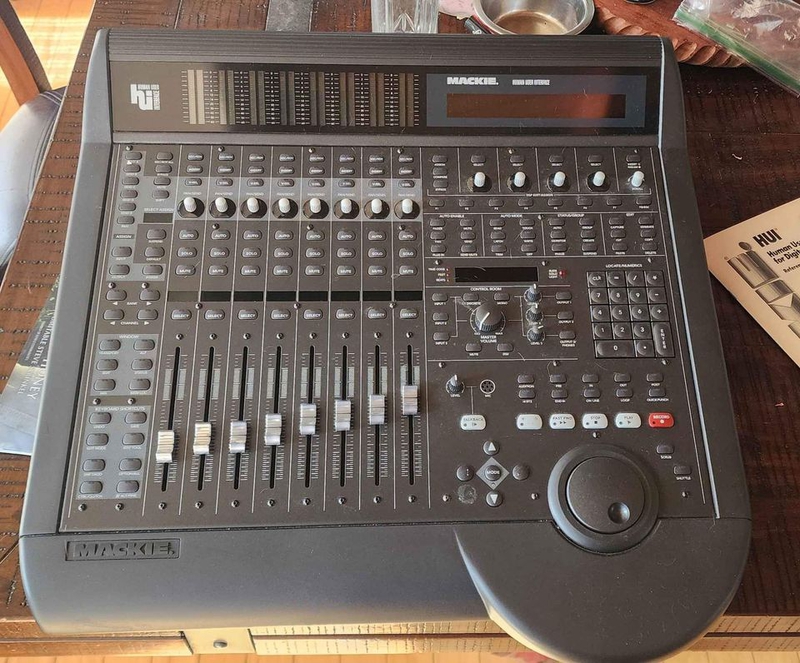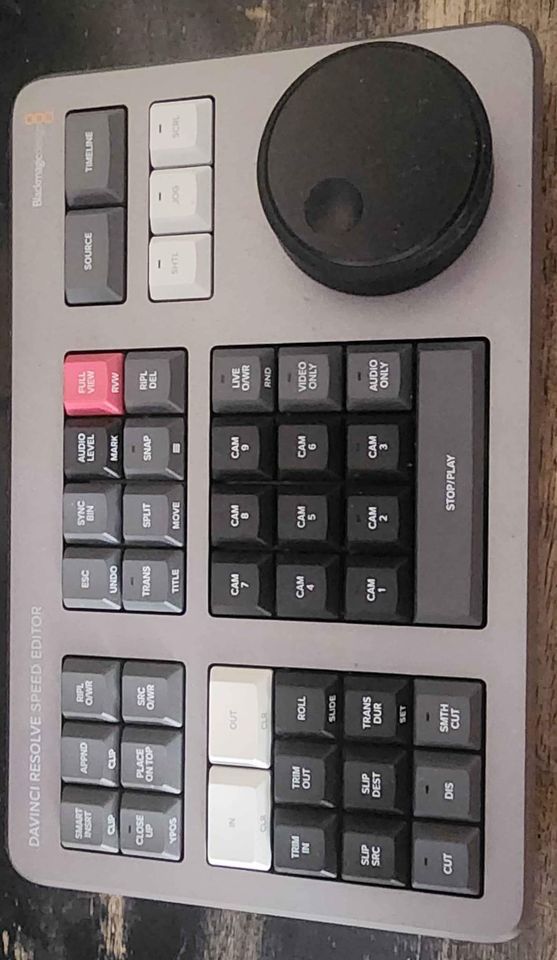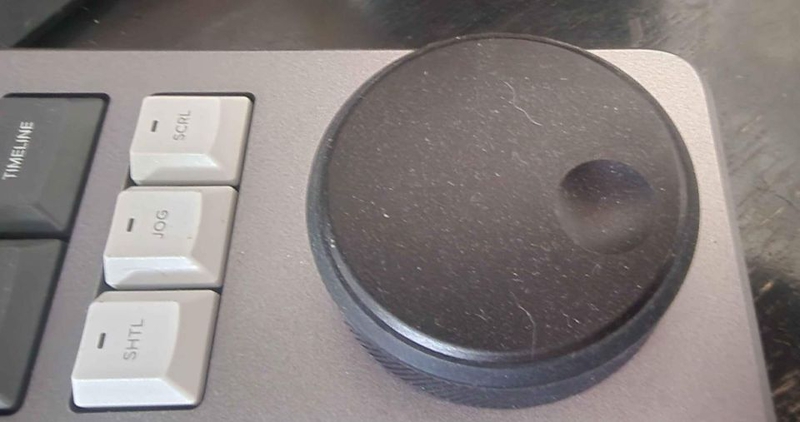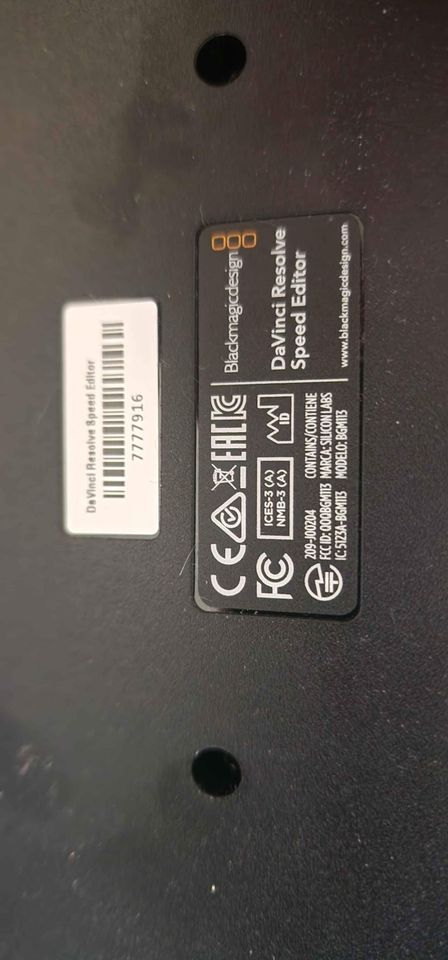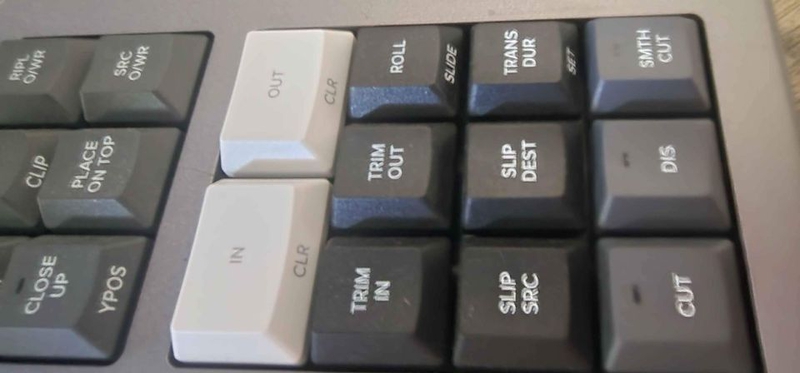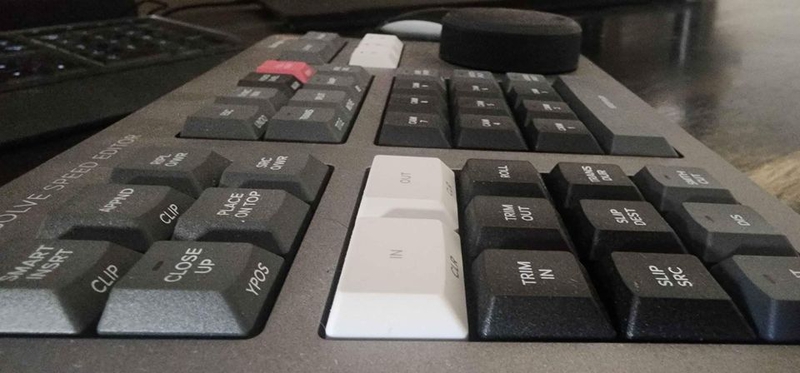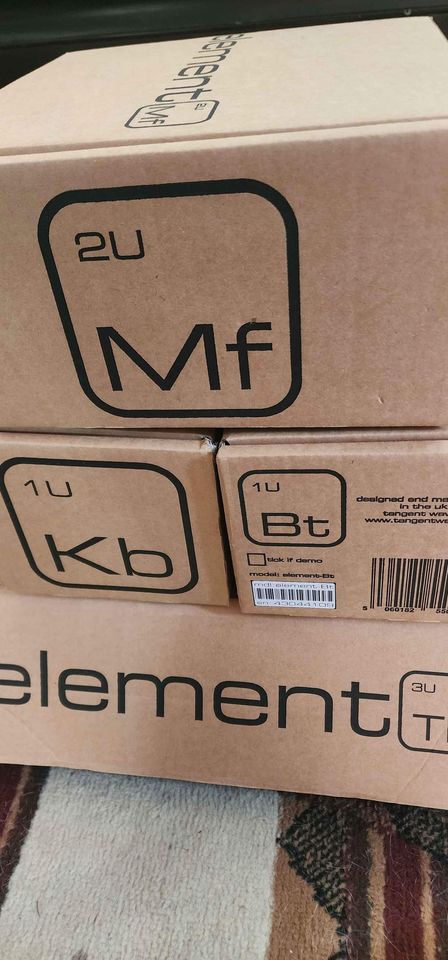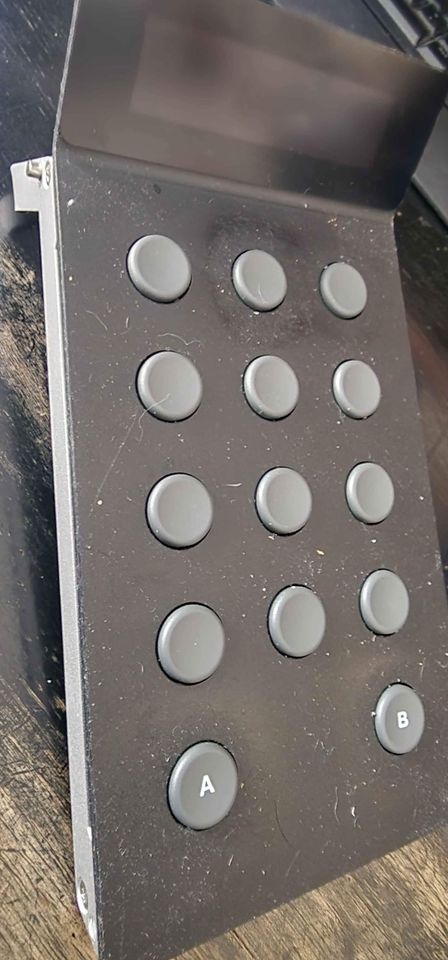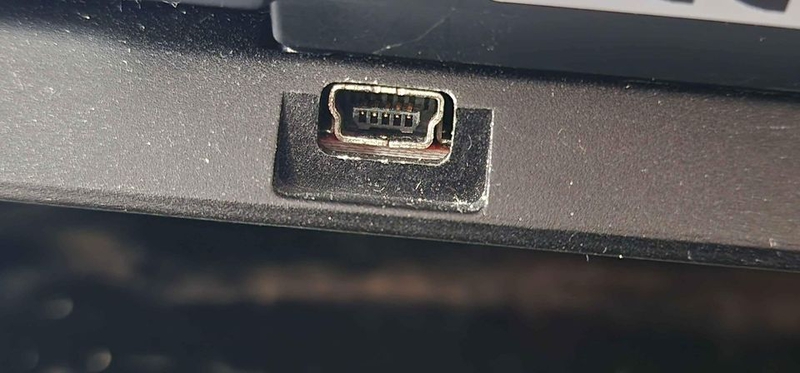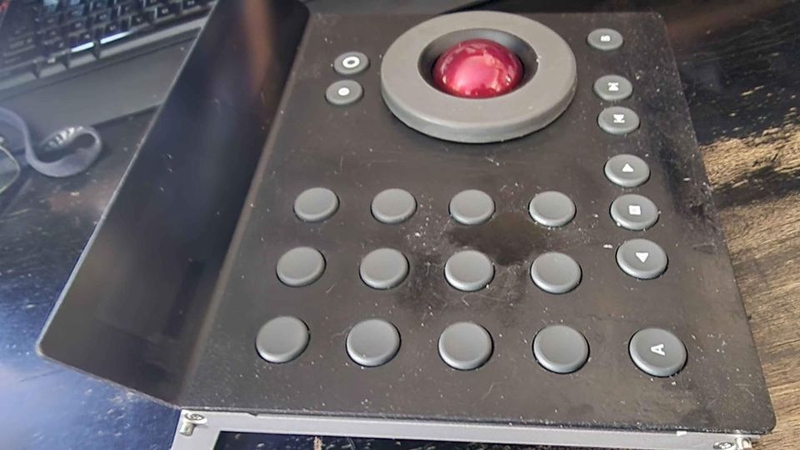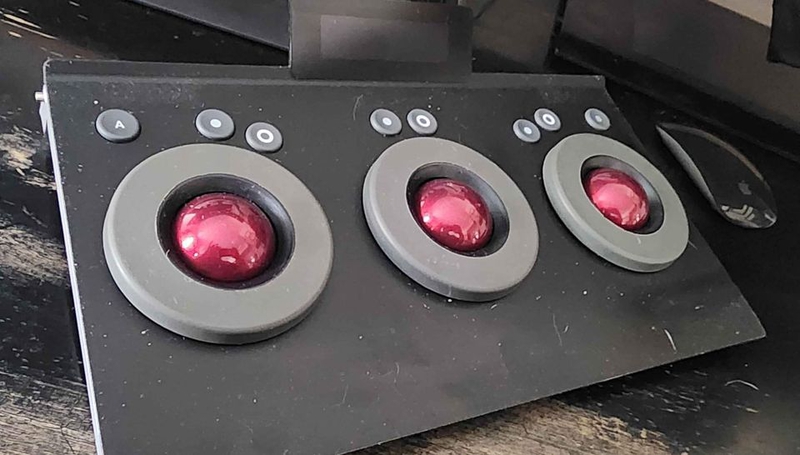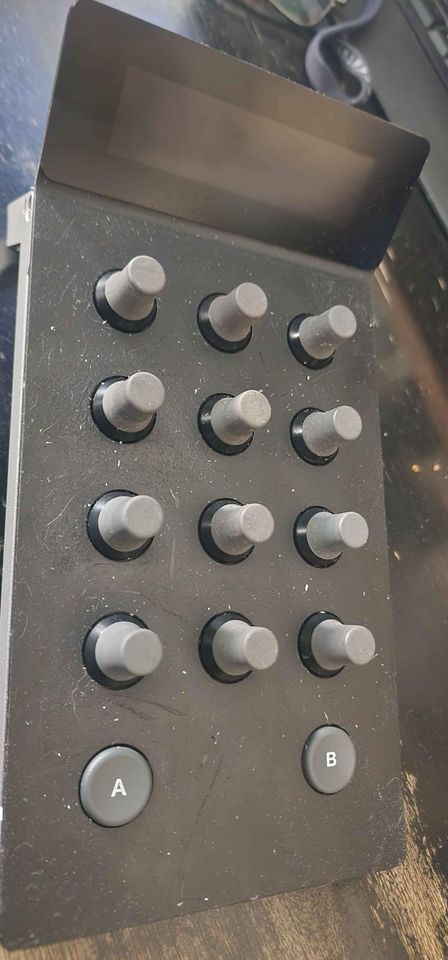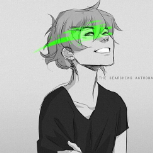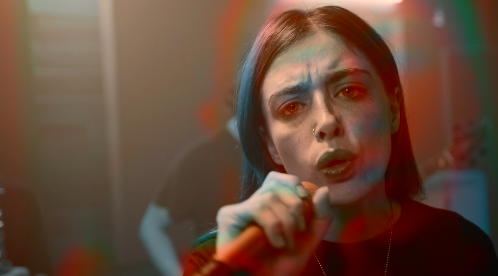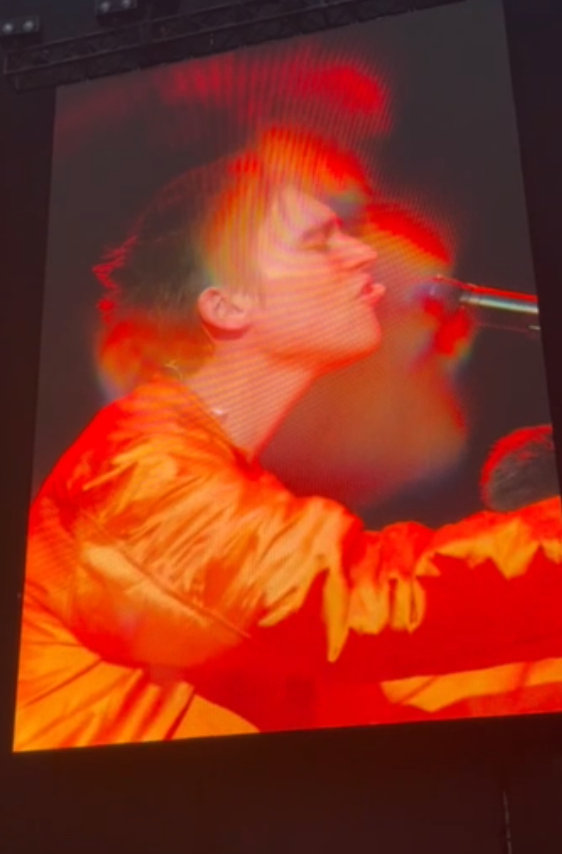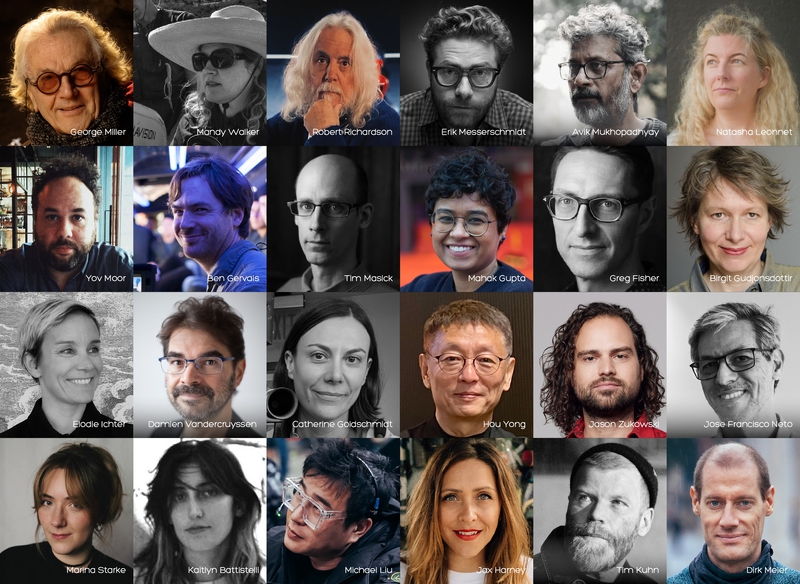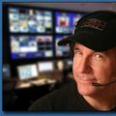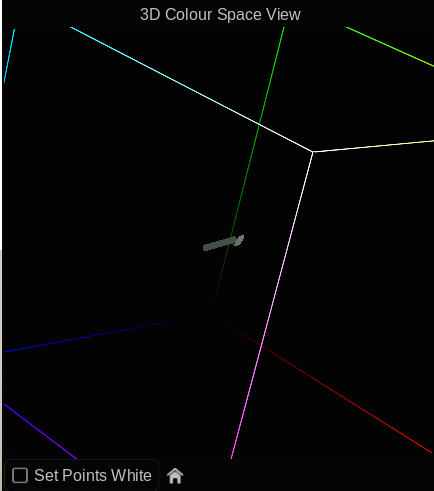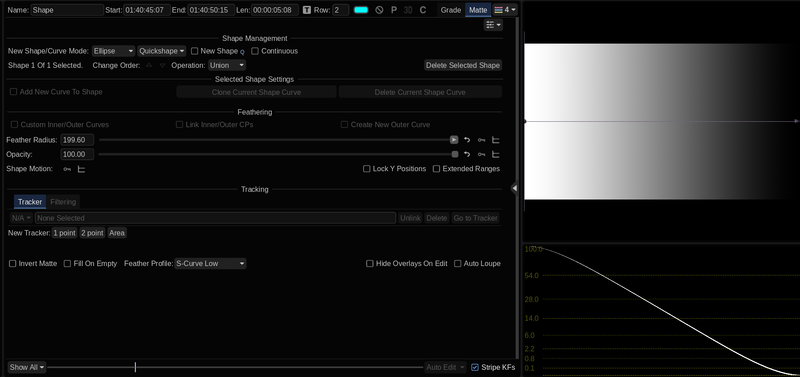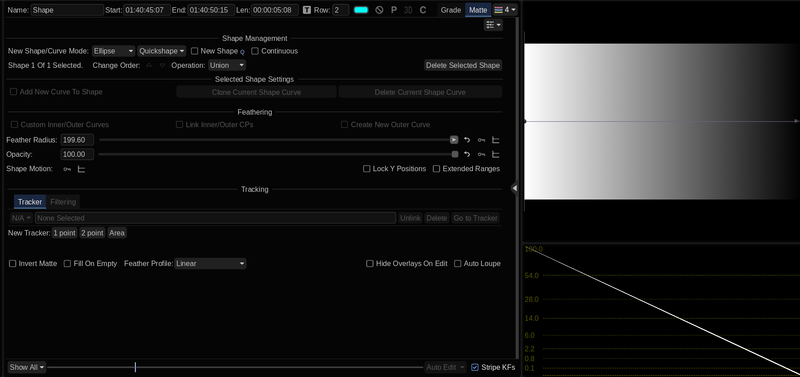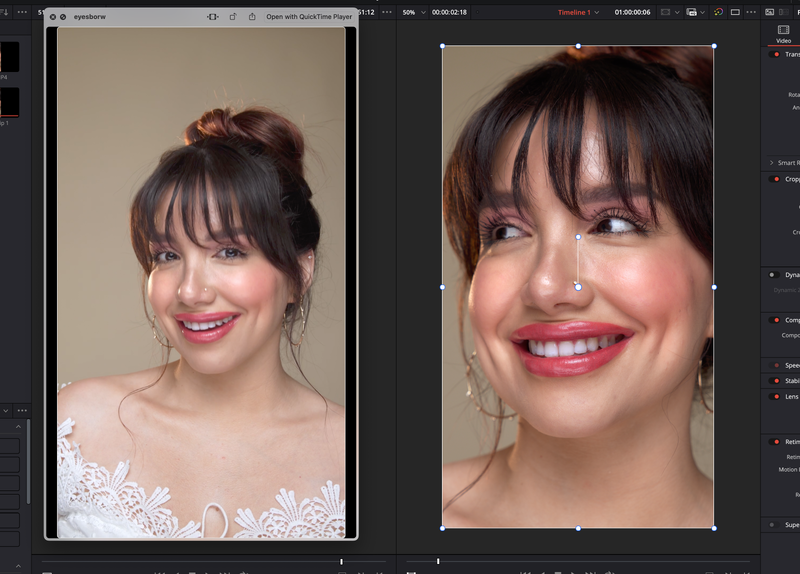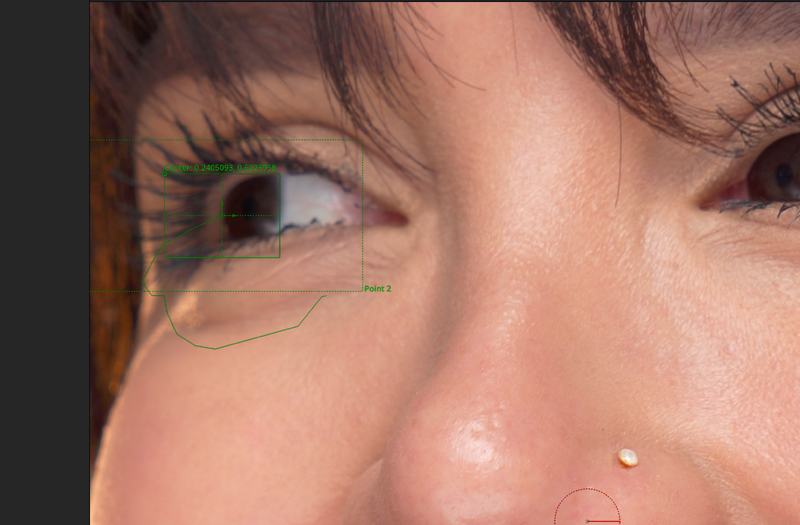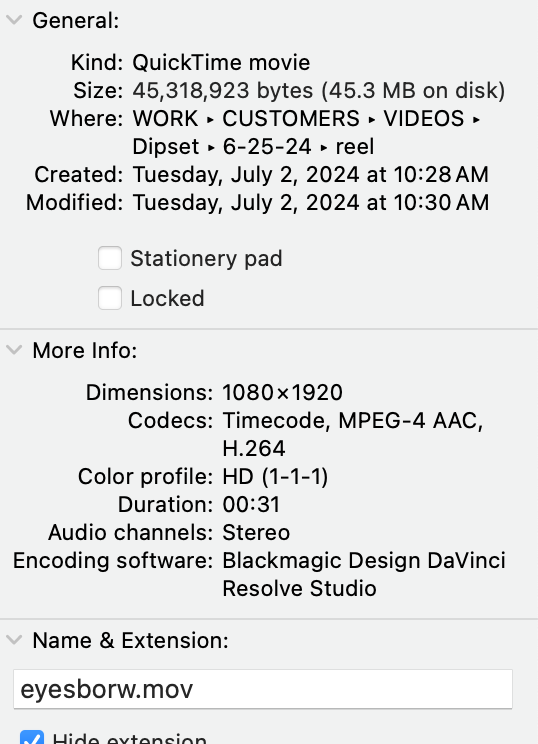This stream auto-updates
- Last week
-
Clean, no dust. all keys fully functional. no issues. barely used. $50. +shipping. Listed on FB marketplace as well.
-
Comes with Midi Cable for connection, original box, manual, product card, and mounting hardware. Works great. no issues afaik. a few buttons have a bit of paint worn a bit, but not completely gone. No problems seeing what they are. $300 +shipping. Or make a serious offer. listed on FB marketplace as well. Mackie's new Human User Interface, first previewed in SOS January '98, was designed to offer a hardware interface for software‑driven digital audio workstations. Digidesign's Pro Tools 4.1 software is the first to support the device, although Mackie intend that other DAWs will eventually also be able to work with the HUI. So what is HUI for? Well, as most SOS readers will know, Pro Tools' onscreen mixer is normally controlled using your computer's mouse. The problem, however, is that a mouse is far from being the ideal device for controlling a mixing console — it is difficult to drag the faders smoothly, and 'turning' knobs on screen can be awkward, to say the least. Consequently, several hardware controllers have been developed as an alternative to software front‑ends over the years, including models from Penny & Giles and JL Cooper: all of these, however, offer only a limited number of controls compared with the HUI, which seeks to give the operator hands‑on control of virtually all of Pro Tools' mixing and editing parameters, as well as a full set of transport and locator controls. At first glance, the control surface looks rather like a compact digital mixer, with eight assignable faders, associated Select switches, and an electronic 'scribble strip' which picks up the channel names from your Pro Tools project and displays these handily above the faders. This feature alone won my instant approval! The faders are motorised so they move to reflect automatically the positions of Pro Tools' onscreen faders. The HUI also has a built‑in meter bridge with eight pairs of dual LED 'ladders'. With mono Pro Tools tracks, only the left LED 'ladder' lights up, while both are used with stereo channels. Having these meters just where you need them is great, especially if you are using the ADAT Bridge interface, for instance, which, unlike Digidesign's 888 I/O hardware, doesn't have any meters.
-
Editor Includes large jog dial in a design that includes only the specific keys needed for editing. Includes Bluetooth with battery for wireless use so it's more portable than a full sized keyboard! $150 plus shipping. or pick it up in person. Also listed on FB Marketplace
-
The Tangent Element suite (4 panels) in original boxes. everything works great! the rubber-ish coating has become a bit sticky. so it needs to be cleaned, or removed, or sent to be redone. your choice. you get all this, for the low low price of US $1,000. and shipping cost..or, pick it up in person. (also listed on FB marketplace)
-
Hi friends, I'm selling my stock of CP200 panels - just need the space for other things 😉 . I got mostly CP200-BK (trackerballs) and CP200-TS (transport panel) - but also a few of the knobs and button panels in black and silver finish. They go pretty cheap: Tangent CP200-BK (Demo-Panel) - Angry Face Tangent CP200-TS (Demo-Panel) - Angry Face The transport panel is a pretty good companion panel for Resolve to add to an existing Mini or Micro panel. The trackerballs panel... maybe less, although I could think of it being used with the HDR wheels eventually. I also have a couple of (unlisted) CP200-K and CP200-S panels, if anybody is interested . Note that these panels are not natively supported in Resolve. You will have to map them to keyboard shurtcuts or program Macros using Tangent's Mapper. Feel free to ping me if you have questions. Shipping worldwide. Cheers! Mazze
-
I went to a concert recently and the video screens had a cool aberration effect. I've been trying to recreate it but have very limited knowledge on different effects or how to go about achieving it. I've attached a video of what it looked like This is how far I've gotten but the colors are all off and it's just not right. Thank you! (Here's a screenshot of the video) IMG_5598.mov
- Earlier
-
Alpha graphics jagged edges in DaVinci Resolve
Elvis Suarez replied to Amada Daro's topic in DaVinci Resolve
I know this is old but try using the Open FX Transform within the edit page. You may need to use in combination with the regular resizing tools, but use the transform effect to really get things down to size. It also has an antialiasing slider for dialing in the edges. Hope this helps! -
FilmLight completes highly-esteemed jury, naming Mandy Walker as jury president and George Miller as guest of honour LONDON — 18 July 2024: FilmLight has finalised the prestigious jury for the 2024 FilmLight Colour Awards and announced Australian film director, screenwriter and producer, George Miller, as guest of honour, and award-winning Australian cinematographer, Mandy Walker, as 2024 jury president. George Miller, AO, is known for directing the dystopian action-adventure films Mad Max (1979), Mad Max 2 (1981) and Mad Max Beyond Thunderdome (1985), Mad Max: Fury Road (2015), which went on to win six Academy Awards with Miller receiving a nomination for the Academy Award for Best Director, and Furiosa: A Mad Max Saga (2024). Other projects include The Witches of Eastwick (1987), Babe (1995), Happy Feet (2006) and more. “Just as slow-drying oil-based paint allowed renaissance art practice to become more iterative, so have the digital tools of the colourist expanded the plasticity of each frame of moving image,” comments Miller. Mandy Walker, AM, ASC, ACS is an Australian cinematographer known for work on Elvis (2022), Mulan (2020), Hidden Figures (2016), Tracks (2013), Australia (2008) and more. “I am honoured to be presiding over this jury in the company of such revered film makers from all around the world,” says Walker. “It’s very exciting to have the opportunity to showcase the talent and scope of artists working in the field of colour timing.” FilmLight also welcomes the following international talent to complete this year’s highly prestigious jury: Kaitlyn Battistelli – senior colourist and partner at ETHOS STUDIO in LA. Kaitlyn is known for her fun and vibrantly hued films across a diverse range of platforms and her work has earned her numerous awards and acclaim. Her work on the feature film Dìdi, won the U.S. Dramatic Audience Award at the 2024 Sundance Film Festival. Greg Fisher – senior colourist at Company 3, London. Fisher is among the world’s most sought-after colourists and a pioneering technologist in the field of image development. Recent work includes Yorgos Lanthimos-directed Poor Things (2023), which has received multiple awards and The Book of Clarence (2023). Jose Francisco Neto – senior colourist and founder of DOT in São Paulo. His work spans a wide range of projects, from short films and feature films to major episodic productions like Disney's Aruna's Magic. He has also served as a post-production supervisor and VFX supervisor on various projects, which contributes to his unique perspective as a colourist. Catherine Goldschmidt – award-winning cinematographer known for her work on the 12th Season of Doctor Who, the Emmy-nominated show Dummy, the critically acclaimed BBC/Amazon series Chloe and HBO’s hit series House of the Dragon, for which she was nominated for a 2023 Emmy Award and the ASC Award for Outstanding Cinematography in a One Hour Television Drama. Birgit Gudjonsdottir – award-winning Icelandic cinematographer with an extensive career in commercials, documentaries, and feature films since the late 1980s, including Goodbye, Lenin! (2003) and The Bourne Supremacy (2004). The first feature film she shot, Jargo (2004), premiered at the Berlinale in 2004. Jax Harney – founder and senior colourist at X-LDN in London. With over two decades in advertising, Harney is known for her innovative approach and work with luxury brands in commercials, television, and film. Yong Hou – acclaimed Chinese cinematographer, director, professor at the Shanghai Theatre Academy, doctoral supervisor, and president of the Chinese Society of Cinematographers. Hou is celebrated for films such as Jasmine Women (2004) and Manifesto (2023) and for his collaboration with director Zhang Yimou. He has received multiple Golden Rooster Awards and international recognition. Tim Kuhn, BVK – award-winning German cinematographer, known for his influential work on series like Breaking Even (2020) and amazon series Luden (2023). Kuhn is a member of the German BVK and the German film academy and his projects, Dear Mr. Führer (2022) and Luden (2023) have both been winners at the FilmLight Colour Awards. Michael Liu – distinguished Chinese cinematographer, who has developed a reputation for his innovative visual storytelling and his ability to blend traditional Chinese aesthetics with modern cinematic techniques. Liu's portfolio includes a diverse array of films and his notable works include The Wandering Earth series. Tim Masick – senior colourist at Company 3, New York. Masick co-founded Company 3 New York in 2002 and is known for pushing the boundaries of what is possible in colour grading. Masick won the Commercial award at the FilmLight Colour Awards in 2023 (Zara Man SS23) and 2021 (Dior Spring Summer 2021 Collection). He has worked on a wide variety of commercials for top directors and cinematographers and an impressive list of major global brands, including luxury fashion and beauty campaigns and projects. Avik Mukhopadhayay – esteemed Indian cinematographer known for his work with directors like Mrinal Sen and Aparna Sen. Mukhopadhayay has received numerous accolades, including two Filmfare Awards for Best Cinematography. Marina Starke – Berlin-based senior colourist with a notable portfolio in feature films, series, commercials, and music videos. Starke is a five-time FilmLight Colour Awards nominee and 2023 Music Video winner for her work on Horra by Mayyas. Jason Zukowski – senior colourist at Fort York VFX in Toronto. Zukowski worked as a DoP, editor, and director before finding his niche in the world of colour grading. He has contributed to award-winning commercials and collaborated with top directors and brands. These talented creatives join the previously announced jury members to complete this year’s jury: Ben Gervais – freelance technical producer; Mahak Gupta – senior colourist at Bridge PostWorks; Elodie Ichter – senior colourist at Light Iron; Natasha Leonnet – senior colourist, Picture Shop; Dirk Meier – freelance colourist, lecturer and 2023 FilmLight Colour Awards winner; Erik Messerschmidt, ASC – cinematographer; Yov Moor – senior freelance colourist; Robert Richardson, ASC, ACK – cinematographer; and Damien Vandercruyssen – senior colourist at Harbor. The FilmLight Colour Awards are open to colourists on any grading platform and close for entry on 31 July. A shortlist will be announced in autumn and the winners unveiled at EnergaCAMERIMAGE in November. For more information, please visit: www.filmlightcolourawards.com/ ###
-
- filmlightcolourawards2024
- colourawards
- (and 7 more)
-
And a newer interview with Stefan Sonnenfeld about Dolby Vision...
-
Good to hear that, Darren. Happy grading 😀
-
Hi Andy! Wow, thanks for the excellent and visual explanation. DKey continues to save my life on a daily basis with it's ninja-like keying. So awesome. Best, Darren
-
Hi Darren, Feather profile: Defines the roll-off between black and white in the shape feather. I personally prefer the s-shaped profiles. DKey: set points white This is just a UI thing. It makes the picked points white in the 3D cube. Cheers Andy
-
color are wrong after export the video
Alex Martin replied to Raul Rodriguez's topic in DaVinci Resolve
It’s better if I can see your node graph, shot to shot. -
color are wrong after export the video
Raul Rodriguez replied to Raul Rodriguez's topic in DaVinci Resolve
I dont think that the problem look how the color change on my phone when i open RPReplay_Final1720020694.MP4 -
color are wrong after export the video
Alex Martin replied to Raul Rodriguez's topic in DaVinci Resolve
Raul, heres an offset LUT - https://f.io/VqdBxr_E Apply this to the tail end of your node tree. The correction may not be exact since the offset is designed for my monitor but might get you close. Let me know if you have any luck, Alex -
color are wrong after export the video
Alex Martin replied to Raul Rodriguez's topic in DaVinci Resolve
Yes so now that the color profile is correct as 1-1-1 you may need to apply a trim correction on render. Take a screen shot of a single frame in QuickTime. Import that shot into the timeline. Go to your original shot that is graded in davinci and take a still. now reference the davinci still, color correct the still from QuickTime to match. that correction will be the offset. Apply the offset correction node to the tail end of your node tree and render the original davinci shot. this should then match when reviewing in QuickTime Player. Helpful tip- use curves and saturation only to achieve the trim, not lift gamma gain so that the offset tracks better across shots. Hope that helps! -
color are wrong after export the video
Raul Rodriguez replied to Raul Rodriguez's topic in DaVinci Resolve
please i need help with this. this is driving me crazy. look how look ion davinci in the right and in left is in quicktime and look the video on. iphone how iphone desaturate the video after i open RPReplay_Final1719980388.mov -
-
-
you say something that i dont understand on the second video wabout the the tracker you press something and i dont underatnd what did you press please put subttittle
-
We shoot a lot of RED Komodo where I work. What would be your Tone Mapping and Gamut Mapping settings when going from Input Color Space - REDWideGamutRGB, Input Gamma - RedLog3G10 to Output Color Space - ARRI Wide Gamut 3, Output Gamma - ARRI LogC3 Thanks in advance.
-
Hi All. There are some terms which I cannot seem to find any definition for. Even Perplexity is perplexed (although it is generally great for finding the more obscure Baselight info). Can anyone point me in the right direction for info on the following terms? In shapes: Feather profile (and it's various options) In Dkey: "set points white" Any help in this would be appreciated. Thanks! Darren
-
color are wrong after export the video
Raul Rodriguez replied to Raul Rodriguez's topic in DaVinci Resolve
Look now say 1-1-1 but like you said when i open on quicktime doesnt look exact like davinci if i open on vlc look exact like davinci but when i post to social media look off like in quicktime -
color are wrong after export the video
Raul Rodriguez replied to Raul Rodriguez's topic in DaVinci Resolve
-
color are wrong after export the video
Alex Martin replied to Raul Rodriguez's topic in DaVinci Resolve
Try rendering these out as Rec-709 scene. The color profile should be 1-1-1, not 1-2-1. Then if you open in Quicktime player, preview, youtube, etc it should be a closer match to resolve. If you open the file in VLC player it should be almost an exact match. Hope that helps, Alex
